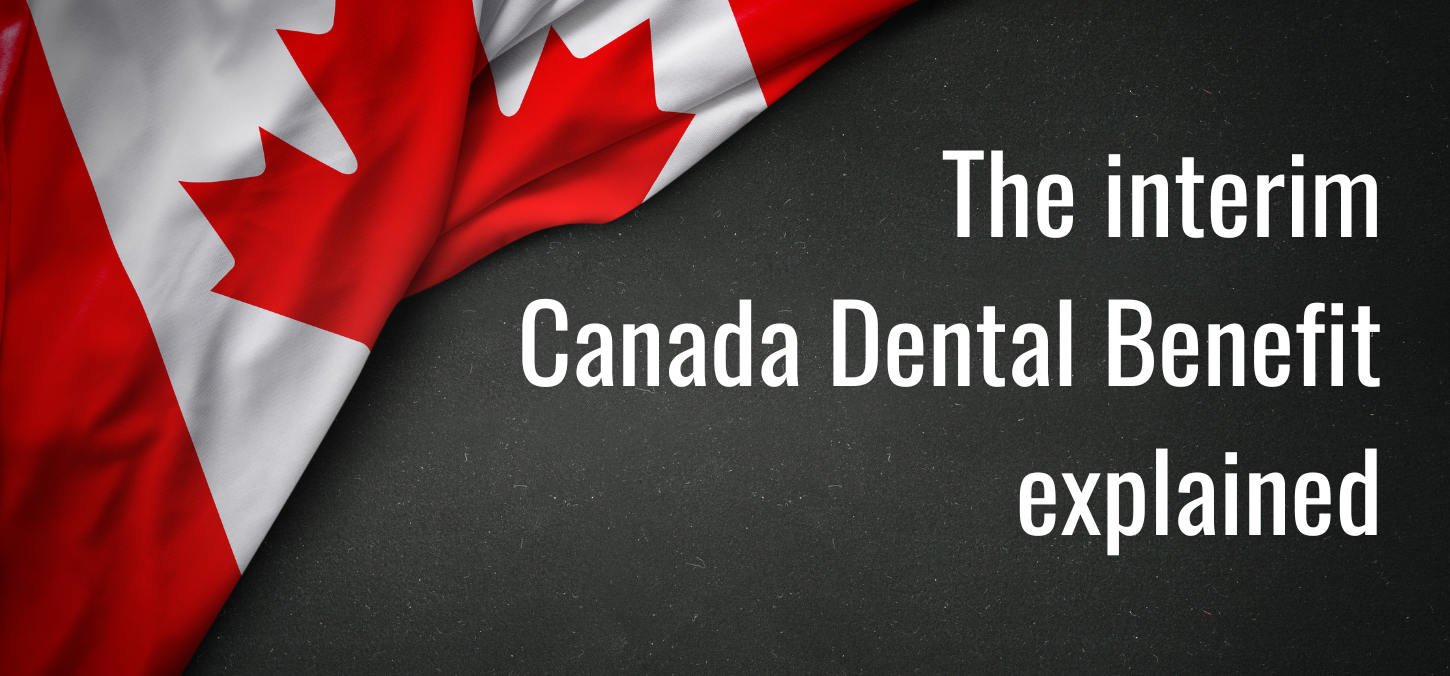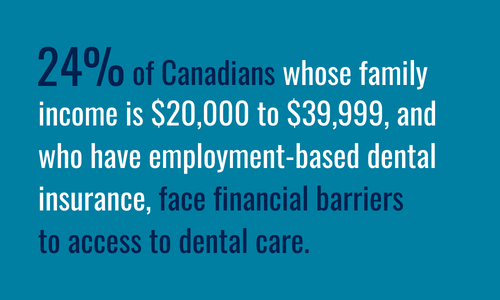
interim Canada Dental Benefit explained
By Nina Ambros
In March 2022, the federal government announced that it was committed to launching a new dental care program for low-income Canadians. At the time, The Faculty’s dental public health experts agreed that this was good news for our oral health care system.
To meet the promised timeline, in December 2022, the federal government launched applications for the interim Canada Dental Benefit (CDB). To better understand the impacts of this update, we sat down with Dr. Sonica Singhal, Graduate Program Director, Dental Public Health at the Faculty of Dentistry, at U of T.
What is the interim Canada Dental Benefit?
The interim Canada Dental Benefit is available to parents and guardians with an annual adjusted family net income of under $90,000, who do not have access to private dental insurance. Parents can visit the CRA website to enroll their children.
Eligible parents and guardians will receive direct, tax-free payments of up to $650 per child, per year – to a maximum of $1,300 per child over the next two years – to help cover out-of-pocket dental care expenses for their children under 12. They can then go to any dentist to receive care. The first benefit period is until June 2023. Parents will then have to re-apply for the second benefit period, from July 2023 to June 2024.
“Proper planning for a new federal program is an enormous undertaking and can take time. It’s important to note that the new Canada Dental Benefit is an interim solution, not the phase one of the initially proposed dental care program, which was supposed to start with children under 12 years old by the end of 2022, then extend to children under 18 years old, people with disabilities, and seniors by the end of 2023, and then to all family members of families earning less than $90,000 by the end of 2025.” says Dr. Singhal.
The importance of federal and provincial collaboration
As the government continues to develop the federal program, it’s critical to understand how it will interact with provincial coverage. Currently, dental coverage varies across the country and therefore the window on who would benefit from the new CDB is different by province. As few examples, Ontario has the Healthy Smiles Ontario (HSO) program for children under 18 years from low-income families. Quebec already has a universal dental care plan for children 10 and under, not based on income eligibility. Prince Edward Island’s oral health program covers preventative services for all children 3- 17, not based on income eligibility, and other basic diagnostic and restorative services for children from low-income families. Interestingly, the PEI program charges a co-payment of 20 per cent for restorative services for children whose net family income is more than $30,000. The implementation of this interim benefit with different eligibility and coverage criteria can potentially create confusion among provincial administrators in running their existing public programs.
“We need some consistency across the board. The federal government needs to develop standards around the eligibility criteria, services to be covered, and the reimbursement rate. This would identify the basic minimum standard that each jurisdiction needs to have” says Singhal. “Based on this basic minimum standard, provinces and territories could then decide if they want to give above and beyond, depending on their populations’ need.”
Standing out from existing dental coverage
A key difference between existing public programs and the new CDB is that with government assistance programs, the money goes to the administrator who then pays the dental office, but with new benefit, the money will go directly to the parents giving them more autonomy and opportunity to visit a dentist of their choice, as not all dentists accept public insurance.
In Ontario, if a parent is covered by Ontario Works or the Ontario Disability Support Program, their children are automatically covered by Healthy Smiles Ontario (HSO). Any children who are already enrolled in HSO are also eligible for the new interim CDB.
“This will be great for parents, as anything that is potentially not covered by Healthy Smiles Ontario could be covered under this new benefit” says Singhal.
Inequities in coverage
To qualify for the benefit in the 2022-23 benefit year, parents must submit their filed 2021 tax returns. This can create barriers to coverage for some Canadians. “New immigrants who just immigrated in 2022 cannot access the benefit because they do not have a tax return from the previous year. This gap could be mitigated by applicants being able to provide other documentation, such as their landing paper or pay stubs, to determine eligibility.” says Singhal.
In addition, excluding children having access to private insurance from this interim benefit can be considered inequitable, as some individuals, who have employment-based dental insurance find co-payments for their children’s dental procedures as a financial barrier to access to care.

U of T Dental public health researchers can show that 24 per cent of Canadians, whose family income is between $20,000 and $39,999 and 18.5 per cent of those, whose family income is between $40,000 and $59,999 and who have employment-based dental insurance, face financial barriers to access to dental care.
With this information, it seems that the provision of this CDB may still leave many families behind. “Unfortunately, children from such families are not covered by a provincial dental program and would be ineligible for this new CDB, making it inequitable for the identified target population. Calling it a program for low- and middle-income families would be unfair until the private insurance clause is removed.” says Singhal.
Addressing Canada’s oral health needs
So, is the new interim CDB enough to take care of the oral health needs of the average Canadian child? “It’s important to note that oral health needs are not the same across all income groups. For children who have been going to the dentist routinely, this benefit may be sufficient. But children from low-income families may have higher needs, as they may not have had access to regular dental care. We do not have sufficient data to suggest whether this amount would be sufficient to meet dental needs of children from this income group.” says Singhal.
It is possible that depending on need, the cost of dental treatment for a child could go over the yearly $650 benefit cap. “In case of pending dental needs, allowing parents to receive the benefit for the second year upfront, instead of sticking to the annual cap, might be a better solution to ensure addressing accessibility barriers.” adds Dr. Singhal. “For the time being, the interim Canada Dental Benefit is a welcomed temporary solution, as we await the launch of the new federal dental care program for Canadians.”
Interested in more research around dental public health? Look out for Dr. Singhal’s new publication “Is private insurance enough to address barriers to access to care?” coming in 2023.